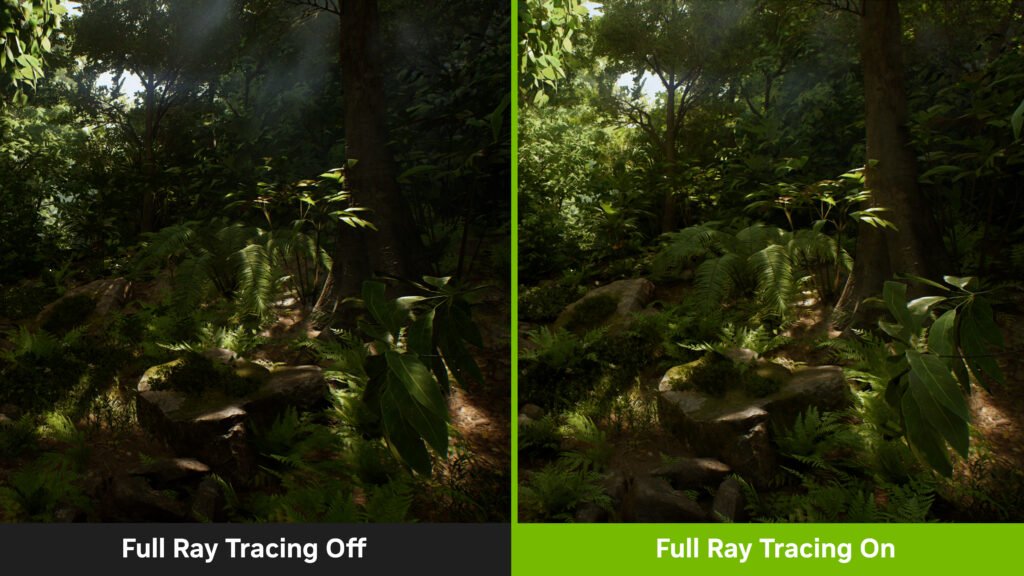By Manuel Alejandro, Gamer & Tech Enthusiast
🎮 Embracing the Ray Tracing Revolution
As a seasoned gamer and tech enthusiast, I’ve witnessed the evolution of graphics technology firsthand. The introduction of ray tracing marked a significant leap, offering unprecedented realism in lighting, shadows, and reflections. But with great power comes great responsibility—or in this case, the need for optimization. Let’s delve into how to optimize your gaming PC for ray tracing and determine if the performance gains justify the hype.

🤯 Ray Tracing in AMD 🤯24GB GDDR6 🤯
- Boost Clock: Up to 2615MHz / 20Gbps. Game Clock: 2455MHz / 20Gbps.
- AMD Radeon RX 7900 XTX GPU.
- 24GB GDDR6 on 384-Bit Memory Bus.
- 96 AMD RDNA 3 Compute Units (With Rt+Ai Accelerators).
- 96MB AMD Infinity Cache Technology.
- PCI Express 4.0 Support.
- 3 x 8-pin Power Connectors. 3 x DisplayPort 2.1 / 1 x HDMI 2.1
💡 Understanding Ray Tracing: A Paradigm Shift in Graphics Rendering
Ray tracing simulates the physical behavior of light, producing lifelike visuals by calculating the path of light rays as they interact with virtual objects. Unlike traditional rasterization, which approximates lighting, ray tracing delivers accurate reflections, refractions, and shadows. This technology has been a staple in CGI for movies but has only recently become feasible for real-time gaming, thanks to advancements in GPU architecture.
🧠 My Journey: Transitioning to Ray Tracing-Enabled GPUs
My foray into ray tracing began with the NVIDIA RTX 2080, a pioneer in real-time ray tracing capabilities. The visual enhancements were immediately noticeable, but so were the performance hits. Upgrading to the RTX 4090 provided a more balanced experience, allowing me to enjoy ray-traced graphics without compromising frame rates significantly. However, optimization was key to achieving this balance.
🛠️ Optimizing Your Gaming PC for Ray Tracing: A Comprehensive Guide
1. Update Your GPU Drivers
Ensure your graphics drivers are up-to-date to benefit from the latest performance improvements and bug fixes related to ray tracing.
2. Enable DLSS or FSR
NVIDIA’s Deep Learning Super Sampling (DLSS) and AMD’s FidelityFX Super Resolution (FSR) upscale lower-resolution images to higher resolutions, boosting performance without a significant loss in visual quality.
3. Adjust In-Game Ray Tracing Settings
Not all ray tracing effects are created equal. Experiment with different settings—such as reflections, shadows, and ambient occlusion—to find a balance between visual fidelity and performance
4. Optimize Windows Settings
Set your power plan to ‘High Performance’ and disable unnecessary background applications to allocate more resources to your game.
5. Enhance Cooling Solutions
Ray tracing workloads can generate additional heat. Ensure your PC has adequate cooling to maintain optimal performance and prevent thermal throttling.
🧪 Performance Analysis: Ray Tracing in Action
In Cyberpunk 2077, enabling ray tracing without DLSS resulted in a 40% drop in frame rates. Activating DLSS mitigated this impact, delivering smoother gameplay with minimal visual compromise. Similarly, Metro Exodus showcased the transformative effect of ray tracing, enhancing immersion through realistic lighting and shadows.
💰 Evaluating the Cost: Ray Tracing-Ready GPUs
As of May 2025, here’s a snapshot of ray tracing-capable GPUs and their approximate prices:
- NVIDIA RTX 4060: $299 USD / €329 EUR
- NVIDIA RTX 4070: $599 USD / €649 EUR
- NVIDIA RTX 4080: $1,199 USD / €1,299 EUR
- NVIDIA RTX 4090: $1,599 USD / €1,699 EUR
- AMD Radeon RX 7900 XTX: $999 USD / €1,099 EUR
Prices may vary based on retailer and region.
(Update 19-05-2025)
🤔 Ray Tracing vs. Rasterization: Weighing the Pros and Cons
Ray Tracing:
| Technology | Pros | Cons |
|---|---|---|
| Ray Tracing | Unparalleled realism, dynamic lighting, accurate reflections | Higher performance demands, requires compatible hardware |
| Rasterization | Faster rendering, lower hardware requirements | Less realistic lighting and reflections |
The choice between ray tracing and rasterization depends on your priorities—visual fidelity or performance
Frequently Asked Questions (FAQs)
What is ray tracing and how does it work in PC games?
Ray tracing is a rendering technique that simulates the physical behavior of light to create realistic lighting, shadows, and reflections. In PC games, it enhances visual fidelity by tracing the path of light rays in real-time.
How can I optimize my gaming PC for ray tracing?
To optimize your PC for ray tracing, update GPU drivers, enable DLSS or FSR, tweak in-game ray tracing settings, improve airflow and cooling, and close background apps to free system resources.
Which are the best ray tracing GPUs in 2025?
Top ray tracing GPUs in 2025 include NVIDIA RTX 4060, 4070, 4080, 4090 and AMD Radeon RX 7900 XTX. Prices range from $299 to $1,599 USD depending on the model and region.
Does ray tracing impact gaming performance?
Yes, ray tracing is resource-intensive and can lower FPS significantly. However, using upscaling technologies like DLSS or FSR can help maintain smooth gameplay with ray tracing enabled.
Is ray tracing better than rasterization?
Ray tracing offers superior realism, while rasterization is more performance-friendly. The best choice depends on whether you prioritize visual quality or frame rate performance.
Is ray tracing worth it in 2025?
For high-end systems and gamers who value graphical fidelity, ray tracing is absolutely worth it in 2025. Paired with optimization techniques, it can deliver a stunning yet playable experience.
✅ Conclusion: Is Ray Tracing Worth It in 2025?
Ray tracing has matured significantly, offering gamers a new level of immersion. While it demands more from your hardware, the visual enhancements can be worth the investment, especially when paired with optimization techniques like DLSS or FSR. If you’re aiming for the pinnacle of gaming visuals and have the necessary hardware, embracing ray tracing can elevate your gaming experience
- How to Optimize Your Gaming PC for Ray Tracing: Real Performance or Just Hype?
- Razer Blade 18 Gaming Laptop: Better than a Desktop PC?
- Your Ultimate Guide to Building a Budget-Friendly Gaming PC in 2025
- 2025 Graphics Card Showdown: Nvidia vs AMD for Gaming
- The 10 Best Gaming Laptops of 2025 – Ultimate Buying Guide













